The Plymouth Rock is among the most popular chicken breeds in America and for good reason.
From an easygoing demeanor to prolific egg and meat production, Plymouth Rocks are great chickens to raise and keep as pets.
Here is everything you need to know about this beautiful breed if you are considering adding it to your flock.
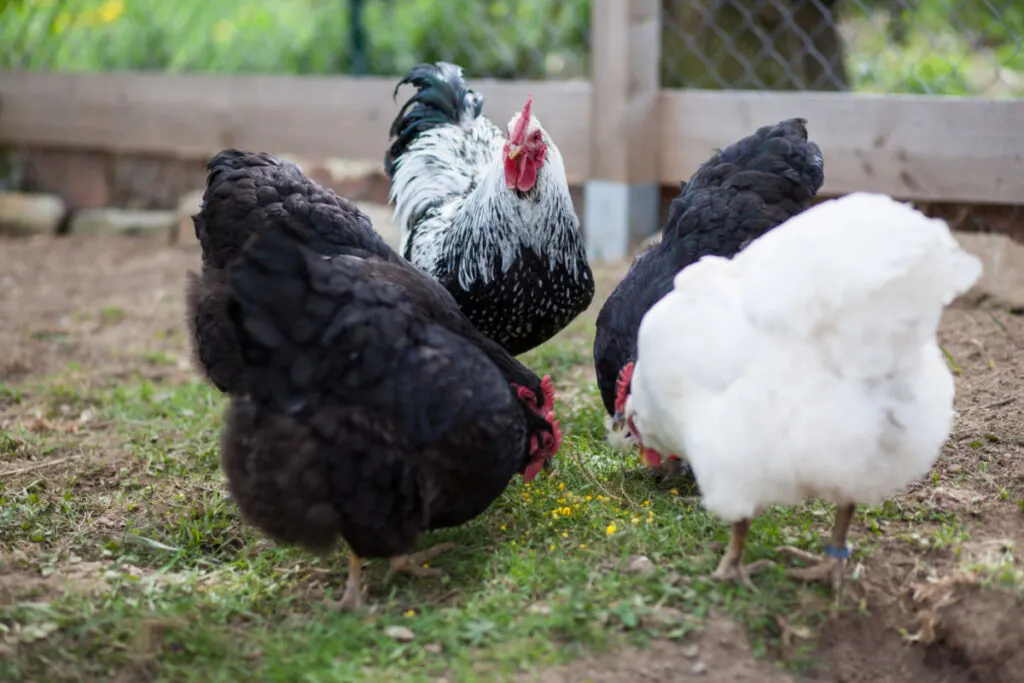
Table of Contents
History
The Plymouth Rock is a domesticated American chicken breed.
Plymouth Rock chickens first appeared in Boston, Massachusetts, in 1849.
The breed’s reign, however, did not begin until 1869 when D.A. Upham showcased the birds in Worcester. They were a cross between Java hens and single-comb roosters with barred plumage.
Upham was selectively breeding for clean legs and barred plumage. And breeders believe that these birds are the ancestors of today’s Plymouth Rock breed.
Other breeders believe that other chicken breeds like the White and Buff Cochin, Brahma, White-faced Black Spanish, Black Java, and Dominique also played a part in the development of the Plymouth Rock chickens.
That said, the pioneering Plymouth Rock chickens were barred, hence the name “Barred Rock“. Other color varieties developed later include:
- White
- Columbian
- Buff
- Partridge
- Silver-Penciled
- Blue
Eventually, the American Poultry Association accepted the breed (Barred Plymouth Rock) into its Standard of Excellence in 1874.
Due to the breed’s commendable meat production, the Plymouth Rock was widely used to develop broiler hybrids for the commercial market in the 1920s.
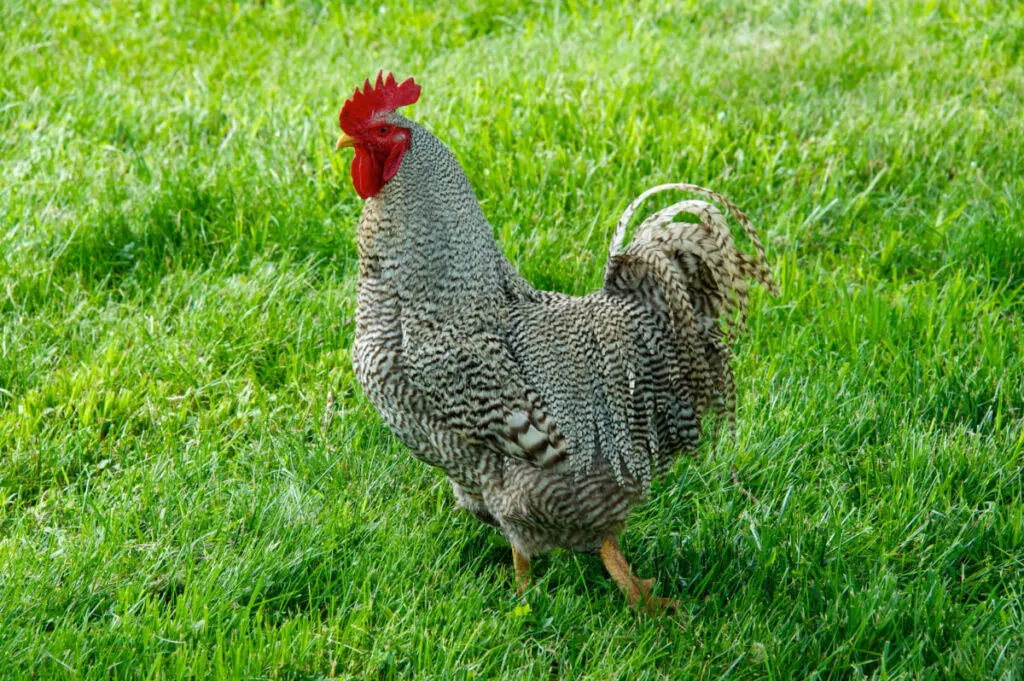
Appearance
This section describes the appearance of the Barred Plymouth Rock as the oldest and most popular in the Plymouth Rock breed.
Plymouth Rocks are big-bodied birds with broad backs and deep full breasts. Their beaks, shanks, and toes are yellow, while their wattles, combs, earlobes, and face are bright red.
The hens have smaller wattles and earlobes than the roosters, but both sexes have reddish bay eyes and clean legs.
The chickens have short and loose feathers, but their bottom layer feathers are downy.
Plymouth Rock chickens have a characteristic barred plumage that is lighter in roosters than in hens.
This is usually because roosters possess two copies of the dominant barring gene that lightens the plumage.
The chickens have a single comb with five serrated points — the front and rear points are shorter than the prominent three in the middle. The comb is small in females and medium-sized in males.
Lastly, keep in mind that the appearance of Plymouth Rock chicks will vary based on their variety.
Size
Standard-sized or mature Plymouth Rock roosters can weigh up to 9½ pounds and hens, 7½ pounds. Such decent weight is what has rendered the birds excellent meat producers over the years.
Bantam varieties, on the other hand, can weigh up to 40 ounces for the hens and 48 ounces for the roosters.
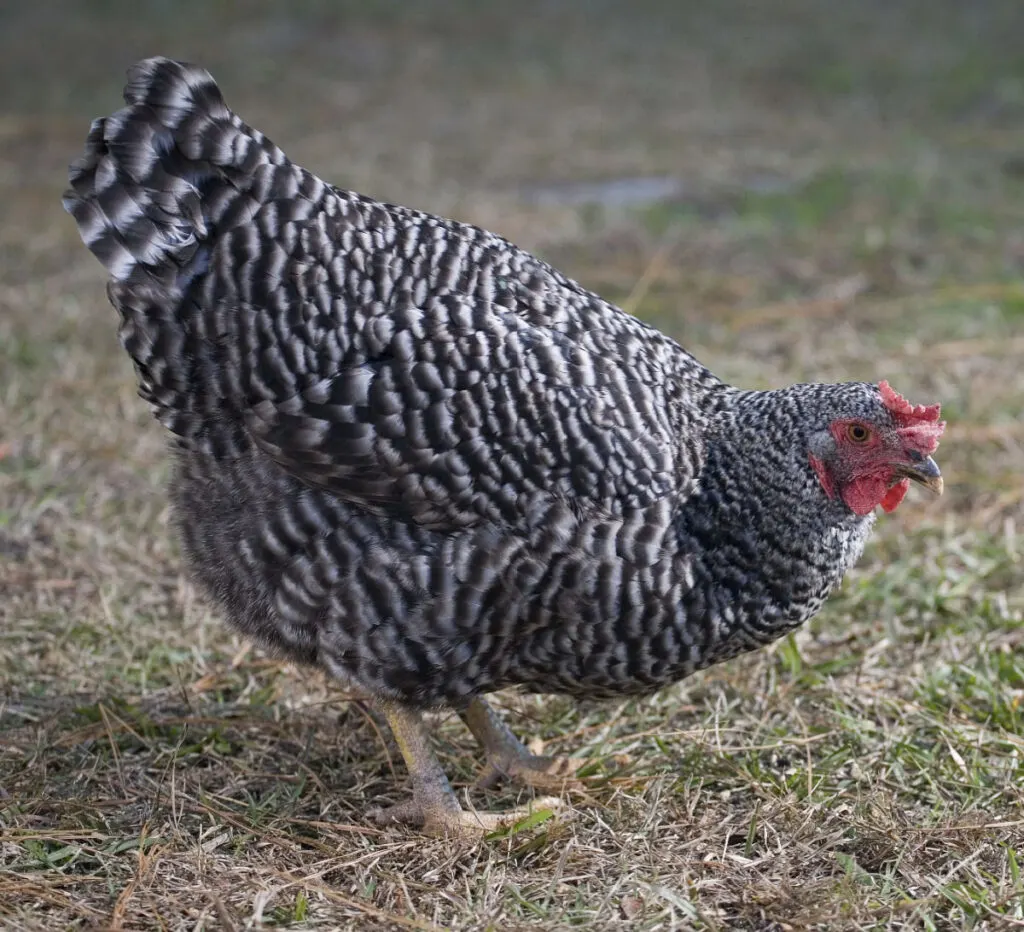
Uses
Up until World War II, the Plymouth Rock was by far the most popular and the most domesticated chicken breed in America.
This popularity came from the breed’s exceptional egg and meat production, which is no wonder Plymouth Rocks are considered dual-purpose birds.
The popularity was also from the breed’s hardiness, broodiness, and docile nature that made it a fitting farm chicken and pet.
Centuries later, Plymouth Rock chickens are still raised for their dual purpose, hardiness, and their calm demeanor that makes them great pets for both children and adults.
Egg Production
While the egg yield depends on the strain of the bird you have, Plymouth Rock hens will lay roughly 4 large and brown eggs per week. This makes an average of 200 eggs annually.
The hens reach maturity between 18 and 20 weeks and will consistently lay eggs for the first 3 years, after which their egg production declines yearly for up to 10 years.
Meat Production
As we have already seen, Plymouth Rocks are heavy birds that guarantee to pack a decent amount of meat for subsistence and commercial use.
In addition to quantity, people who have tried the meat consider it tender and tasty. Lastly, Plymouth Rock chicks mature in 8 to 12 weeks, making them good broilers choices.
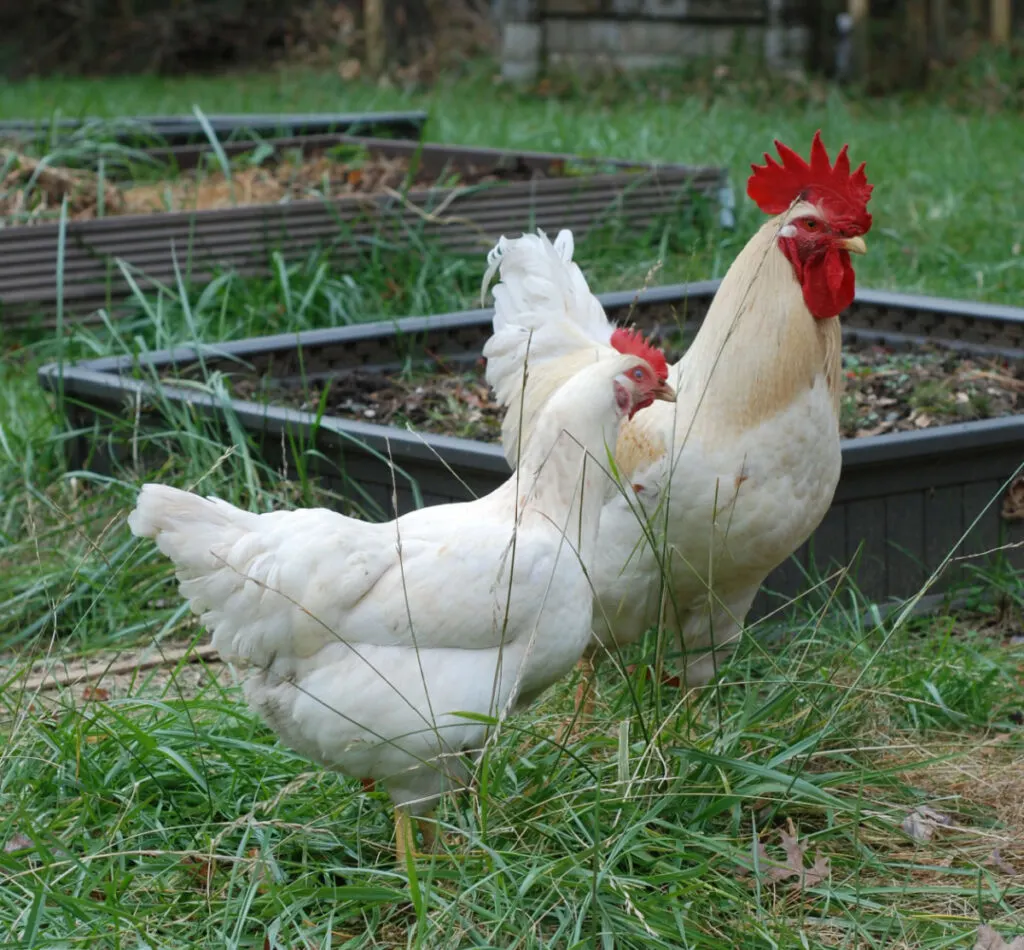
Varieties
The Plymouth Rock chickens were originally barred. That being said, breeders have developed more varieties by crossing Plymouth Rock with other chicken breeds with desirable characteristics.
Acceptable Plymouth Rock varieties include:
- White
- Partridge
- Blue
- Buff
- Columbian
- Silver Penciled
All the colors named above plus black have bantam versions that are also acceptable. Keep in mind that white and barred are the most common varieties.
Also, only five of these varieties are acceptable in Great Britain, where they are classified as heavy and soft feathered. They include:
- Barred
- Buff
- Black
- White
- Colombian
The European Association of Poultry, on the other hand, recognizes up to 10 varieties of Plymouth Rock chicken breeds.
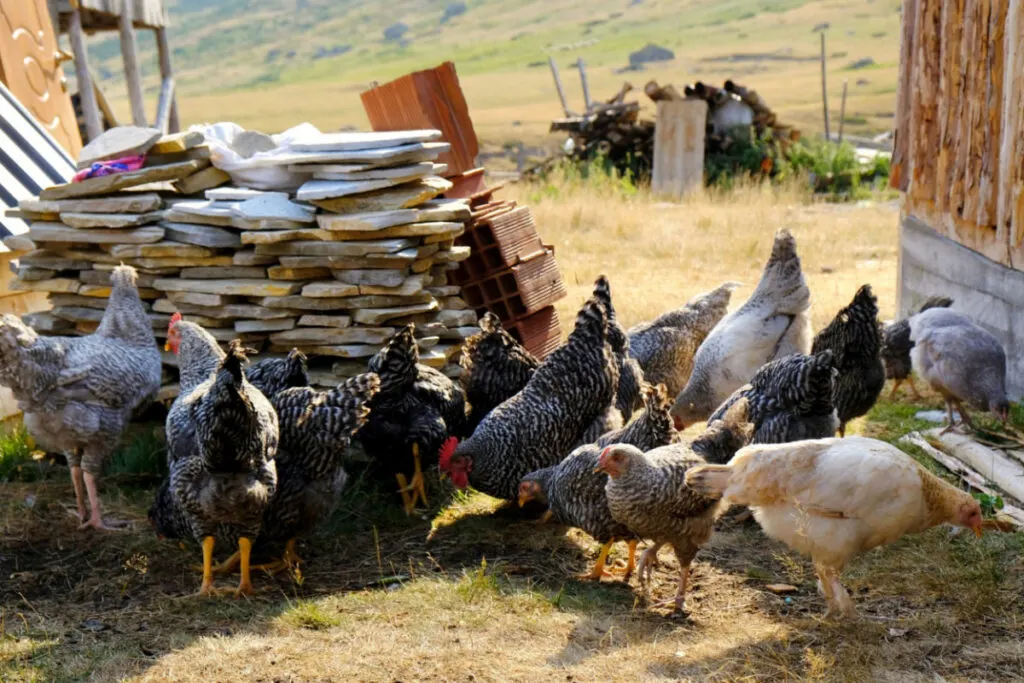
Temperament
Barred Plymouth Rock chickens are naturally cheerful and easy-going birds. They get along with other flock members and never pick fights or bully smaller breeds in the flock.
Both roosters and hens are docile, and their ability to interact with human beings makes them a true pleasure to raise.
To satisfy their curious streak, they often roam and explore their environment or follow their owner for treats.
This calm, trusting, and lovable nature renders Plymouth Rocks fun pets to keep for both adults and children.
Plymouth Rocks prefer to free range in the outdoors but the breed handles confinement quite well as long as they have enough room to move around.
Lifespan
Barred Plymouth Rock are long-lived chickens thanks to their exceptional genetics.
With care and great maintenance, the bird can live for 10 to 12 years, since they are generally a healthy breed.
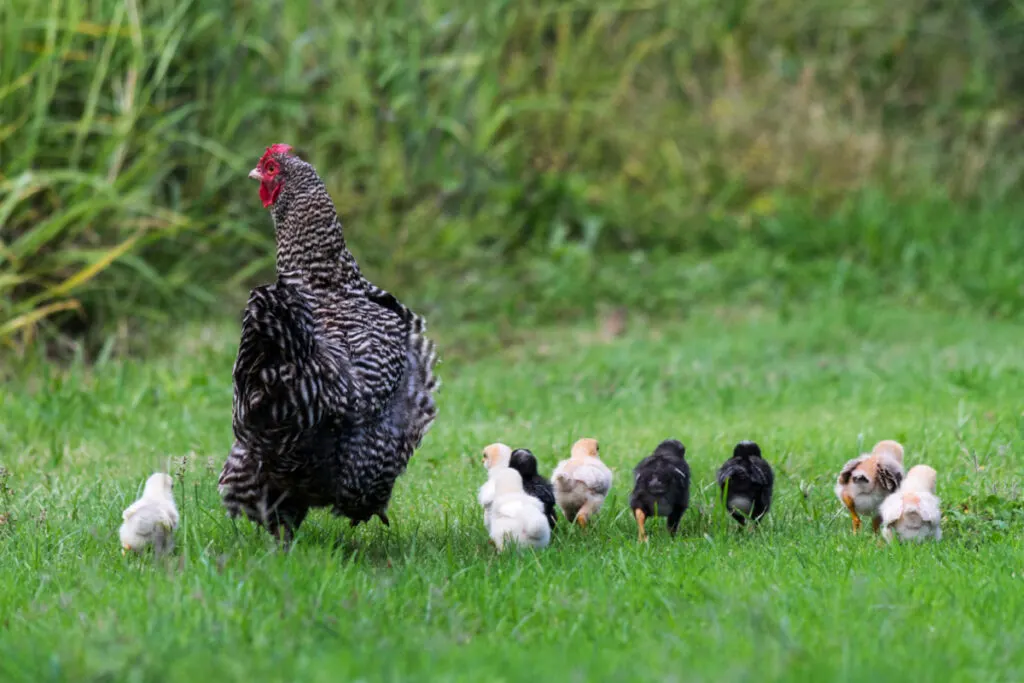
Broodiness
While the Plymouth Rock hens are rarely broody, they are usually commendable sitters and usually good mothers to their chicks.
The chicks feather quickly and are fast-maturing, making Plymouth Rocks a profitable breed to raise.
Hardiness
Aside from decent egg and meat production, Plymouth Rocks were and are still revered for their hardiness and adaptability.
With early feathering chicks, the breed adapts well to cold weather but can struggle in hot weather.
Common Health Issues
Being a healthy chicken breed is another reason why Plymouth Rocks were so popular back in the day.
Luckily, the breed is still healthy and mostly only has to deal with the usual parasites — mites and lice.
That being said, the birds are also at risk of internal parasites. To prevent this, consider adding crushed garlic and apple cider vinegar to your flock’s diet.
Other health issues Plymouth Rocks are likely to deal with include:
| Diseases | Causes | Symptoms | Prevention |
| Bumblefoot | Bacteria | Baggy skin swelling at the bottom of the feet and toes Puss build-up | Proper coop hygiene Encourage short nails Check your run and coop for sharp objects |
| Vent Gleet | Fungal (Candida albicans) | Foul smell Sticky whitish-yellow discharge Dirty tail feathers with white crusting | Practice good hygiene |
| Vent Prolapse | Strained egg passing | Protruding fleshy lining | Monitor egg production Get your hen off laying |
Talk to the vet about any issue or disease your birds may have for the most effective solution.
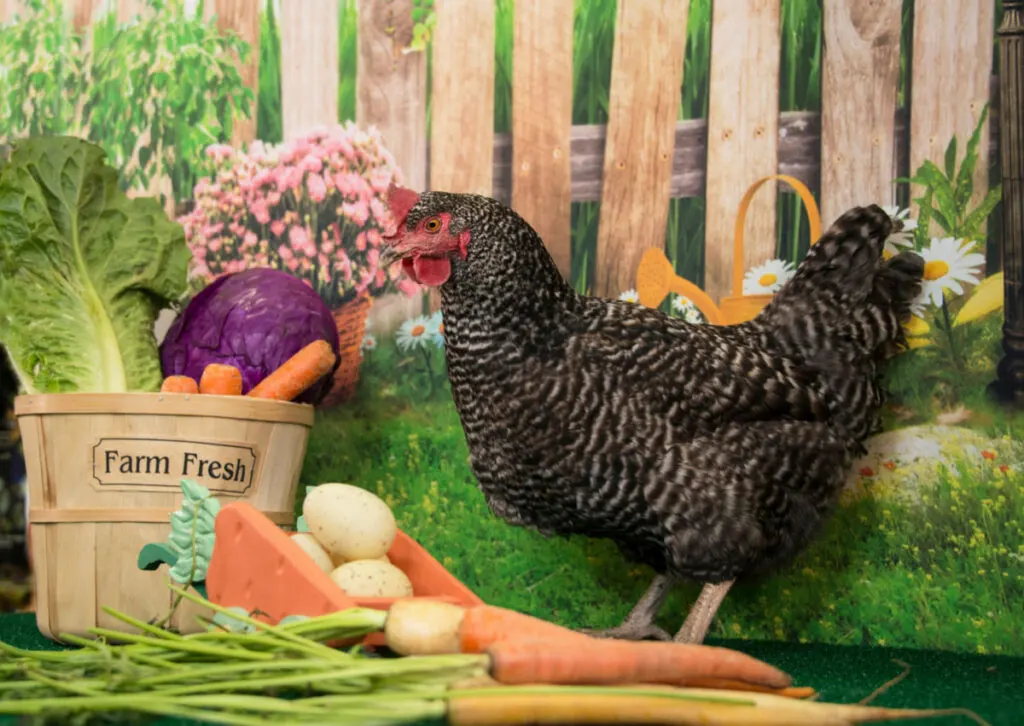
Nutrition
Plymouth Rocks are excellent foragers and will make up for what they don’t get by consuming regular chicken feed.
You should also consider providing your hens with a little more calcium by adding crushed eggshells or shell grit to their diet.
Similarly, occasionally adding apple cider vinegar to your birds’ food and water will help keep disease and infections at bay.
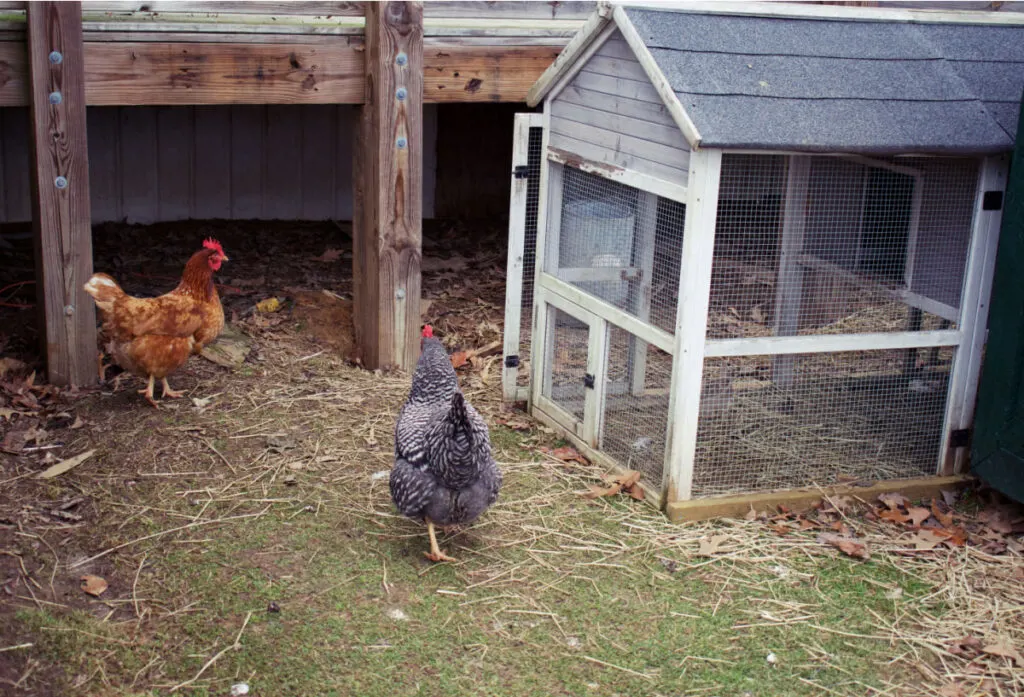
Housing
Plymouth Rocks are naturally curious birds that need ample room to explore and satisfy their curiosity — a run extending from the coop will offer exactly that while keeping your birds safe from predators.
They also need a secure and spacious coop for feeding, nesting, and roosting.
Therefore, plan for several nesting spots depending on the number of hens in your flock, and also have several perches for your birds to roost.
Ensure that your chickens’ coop is well-ventilated for proper heat regulation during hotter months of the year.
Final Thoughts
There you have it. You can never go wrong with the Plymouth Rock if you are looking for a hardy and low-maintenance chicken breed with an equally impressive yield.
The fact that it is a healthy breed only sweetens the deal and helps boost your confidence as a beginner chicken owner.
Resources
- https://www.heritageacresmarket.com/plymouth-rock-chicken/
- https://cs-tf.com/plymouth-rock-chicken/
- https://amerpoultryassn.com/accepted-breeds-varieties/
- https://web.extension.illinois.edu/eggs/res10-breedhistory.html
- https://dodge.extension.wisc.edu/files/2012/02/AQBM-Breeds.pdf
- https://breeds.okstate.edu/poultry/chickens/plymouth-rock-chickens.html
- https://www.bhwt.org.uk/hen-health/health-problems/bumblefoot/
- https://www.bhwt.org.uk/hen-health/health-problems/vent-gleet/
- https://www.bhwt.org.uk/hen-health/health-problems/prolapse/
- https://en.wikipedia.org/wiki/Plymouth_Rock_chicken
- https://www.roysfarm.com/plymouth-rock-chicken/
- https://backyardpoultry.iamcountryside.com/chickens-101/plymouth-rock-chicken/
- https://www.thehappychickencoop.com/plymouth-rock-chicken/
- https://livestockconservancy.org/heritage-breeds/heritage-breeds-list/plymouth-rock-chicken/
- https://cs-tf.com/plymouth-rock-chicken/
